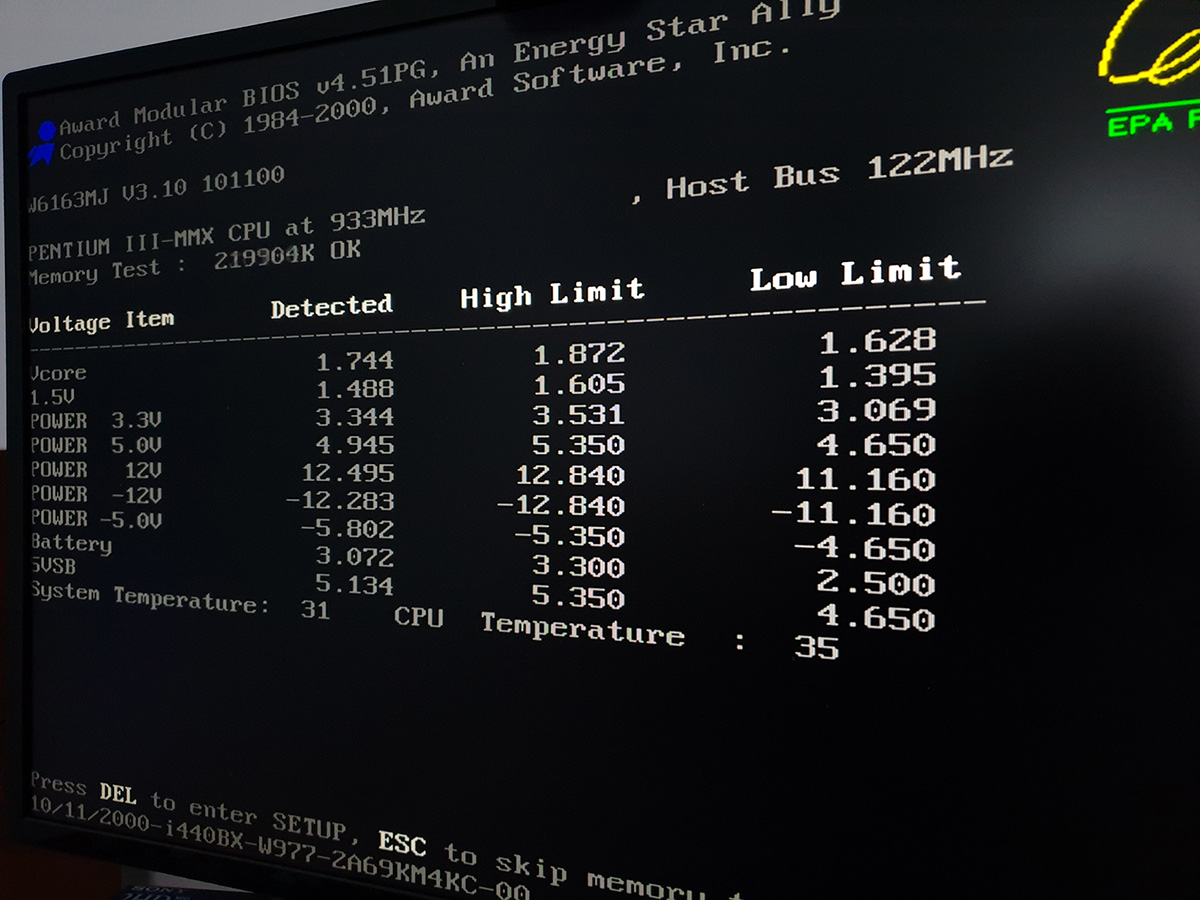First post, by bloodem
- Rank
- Oldbie
Hello guys,
I have what I consider to be a very nice 440BX board (MSI MS-6163 ver 1.0), which is probably as close as it gets to perfection for Pentium 2 Deschutes / Pentium 3 Katmai CPUs.
Now, since the board supports FSB frequencies up to 150 MHz (I'm actually running a Pentium 2 350 MHz CPU @ 504 MHz with a 144 FSB setting and it's unbelievably fast and stable), I really want to try out a Coppermine CPU. I also updated the BIOS to the latest one (which is actually for the Pro version of the board, but it's also supported by ver 1.0).
The issue is that the board only supports 2.0 - 2.4 CPU voltage (configurable in BIOS) and Coppermines are safe up to about 1.8V max.
So you can understand my frustration that, even though I'm 100% sure this board could perfectly handle Slot 1 Pentium 3 CPUs, my hands are tied because of minimum voltage.
Does anybody know of a miraculous solution to this problem, anybody else that might have the same or a similar board?
I know about the Powerleap slotket adapter which supports lower voltages, but I actually want to run pure Slot 1 Coppermine CPUs.
1 x PLCC-68 / 2 x PGA132 / 5 x Skt 3 / 9 x Skt 7 / 12 x SS7 / 1 x Skt 8 / 14 x Slot 1 / 5 x Slot A
5 x Skt 370 / 8 x Skt A / 2 x Skt 478 / 2 x Skt 754 / 3 x Skt 939 / 7 x LGA775 / 1 x LGA1155
Current PC: Ryzen 7 5800X3D
Backup PC: Core i7 7700k

